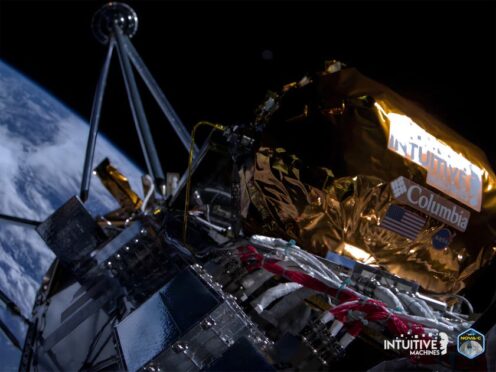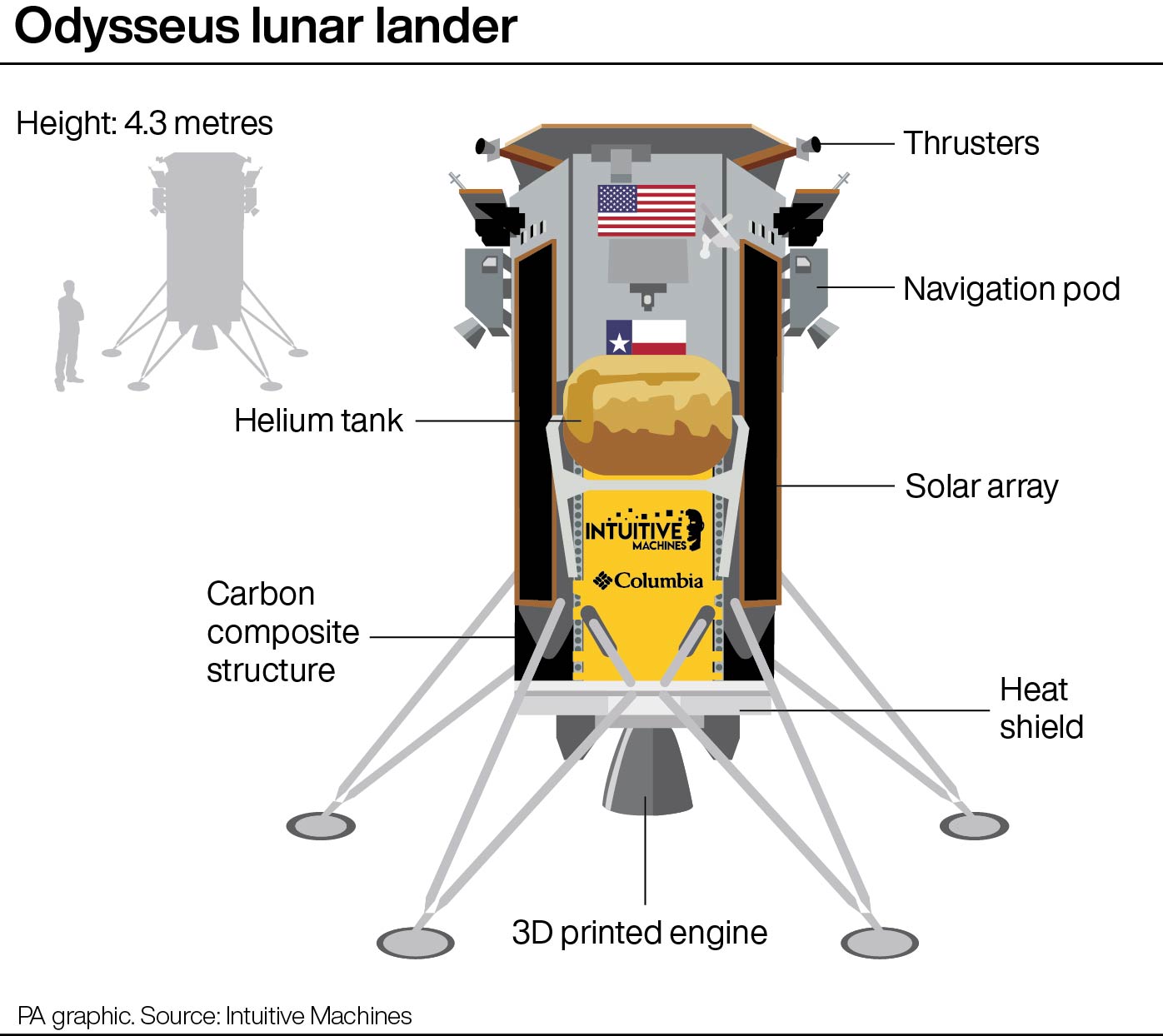
A privately owned spacecraft is on track to make history as it attempts to land on the Moon in the coming hours.
The Nova-C Odysseus lander, built by Texas-based spaceflight company Intuitive Machines (IM), is in lunar orbit and will try to land on the Moon’s south pole region at 23.24pm UK time on Thursday.
If successful, it would become the first private mission to land intact on the lunar surface.
Odysseus would also be the first US Moon landing since the final mission of the Apollo programme, Apollo 17, more than 50 years ago.
Odysseus completed its scheduled 408-second main engine lunar orbit insertion burn and is currently in a 92 km circular lunar orbit. Initial data indicates the 800 m/s burn was completed within 2 m/s accuracy. 🧵1/4 (21FEB2024 0920 CST) pic.twitter.com/ZoFStQD3cX
— Intuitive Machines (@Int_Machines) February 21, 2024
The spacecraft blasted off last week from Cape Canaveral in Florida on top of a Falcon 9 rocket made by Elon Musk’s company SpaceX.
It has performed a series of manoeuvres during its 620,000-mile journey.
Odysseus is a hexagonal cylinder about 13ft (4m) tall and 5ft (1.57m) wide and weighs 1,488lb (675kg), about the size of a British phone box.
It is part of Nasa’s Commercial Lunar Payload Services initiative, which aims to involve commercial companies in the exploration of the Moon.
If successful, Odysseus could pave the way for astronauts to land on the Moon as part of Nasa’s Artemis programme.
The spacecraft will aim to land on Malapert A, a crater 186 miles from the Moon’s south pole.
Odysseus’ Terrain Relative Navigation camera captured this image of the Bel’kovich K crater in the Moon’s northern equatorial highlands.
It is an approximate 50 km diameter crater with mountains in the center, made when the crater was formed.(21FEB2024 1750 CST) pic.twitter.com/0egu0NOrKP
— Intuitive Machines (@Int_Machines) February 21, 2024
The pole is thought to contain water ice, which would be a valuable resource for future human exploration.
Once safely on the surface, it will operate for roughly a week before the lunar night sets on the south pole.
It comes a month after another US spacecraft, Peregrine, failed to touch down after a fuel leak.
The failure of Peregrine, operated by US company Astrobotic, marked the third time a private company had been unable to achieve a soft landing on the lunar surface.
The Beresheet lander, built by Israel’s SpaceIL, crashed during descent in 2019 while the Hakuto-R M1 lander, from Japanese company ispace, was destroyed while attempting to land in April last year.
Controlled Moon landings have only been performed by government agencies including the US, Soviet Union, China, India and Japan.
On board Odysseus are 12 payloads including a Nasa instrument known as Scalpss (Stereo Cameras for Lunar Plume-Surface Studies), a four-camera system which aims to capture Odysseus’s descent to the lunar surface.

The lander will also be carrying a set of 125 tiny sculptures, called Moon Phases, created by US artist Jeff Koons.
Odysseus is insulated with a lightweight fabric, a shimmery gold material that normally lines the inside of ski jackets, made by US company Columbia Sportswear.
Once landing sequences are initiated, the onboard software on Odysseus will select a safe landing site that is free from hazards.
When it is 30m above the designated landing site, Odysseus will go into a vertical descent at 3m per second.
Once it reaches 10m above surface, the lander will break to a 1m per second descent to prepare for a soft landing.
No cameras or lasers will be guiding the spacecraft at this point because of the lunar dust kicking up from the lander’s engine, according to IM.
The company said the descent will be “like walking towards a door and closing your eyes the last three feet”.
It said: “You know you’re close enough, but your inner ear must lead you through the door.”

Enjoy the convenience of having The Sunday Post delivered as a digital ePaper straight to your smartphone, tablet or computer.
Subscribe for only £5.49 a month and enjoy all the benefits of the printed paper as a digital replica.
Subscribe